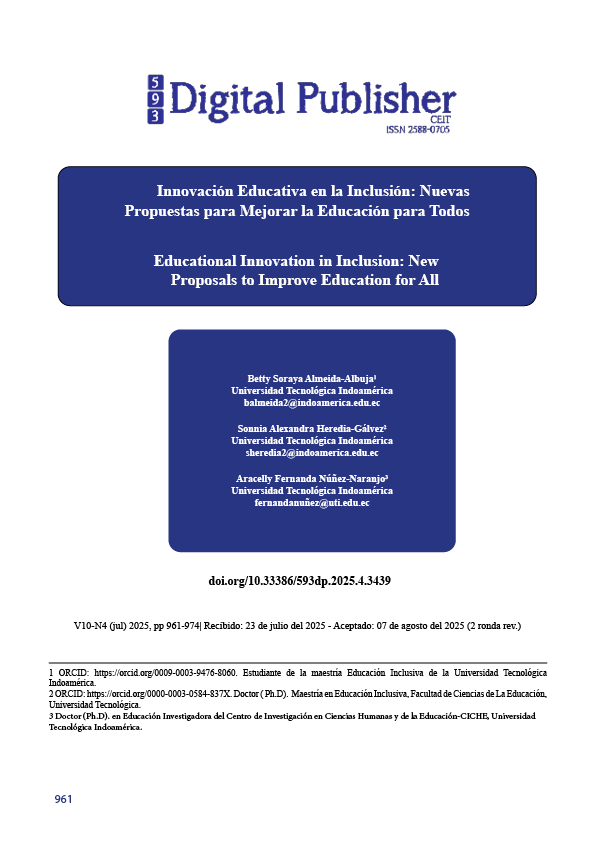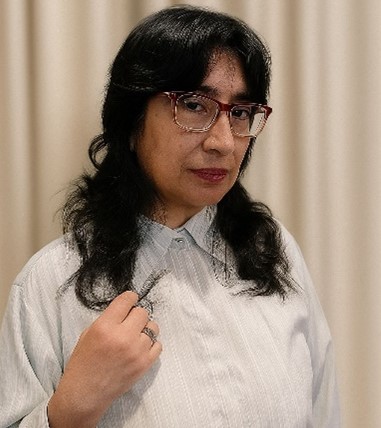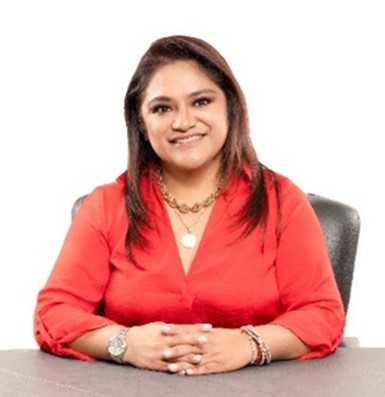Educational Innovation in Inclusion: New Proposals to Improve Education for All
Main Article Content
Abstract
The article addresses the issue of persistent exclusion in educational systems, despite regulatory advances in inclusion. Structural, cultural, and technological barriers continue to limit the access, participation, and learning of students in vulnerable situations, especially in Latin American contexts. The general objective of the study is to analyze innovative educational proposals designed to promote inclusion processes from a critical and systemic perspective. A qualitative, descriptive, and documentary methodology was employed, examining theoretical frameworks on inclusion, emerging pedagogical models, inclusive digital technologies, and recent public policies. The analysis is based on a rigorous bibliographic review of relevant sources indexed in Scopus, Web of Science, and ERIC, which allows for the identification of trends at both the international and regional levels. Among the most important results, disruptive models, emerging technologies, international paradigm experiences, and support policies that have demonstrated positive impacts are identified. Among the most relevant findings, the need to increase flexible curricula, promote specialized teacher training in inclusion, and foster a coherent articulation between educational innovation, social justice, and equity stands out. It is concluded that the most effective educational innovations are those that integrate adaptive technologies, collaborative work, humanization of learning, sustainable institutional support, specialized teacher training, and sustained public policies, thus allowing progress towards a truly inclusive, equitable, and
relevant education for all.
Downloads
Article Details

This work is licensed under a Creative Commons Attribution-NonCommercial-ShareAlike 4.0 International License.
1. Derechos de autor
Las obras que se publican en 593 Digital Publisher CEIT están sujetas a los siguientes términos:
1.1. 593 Digital Publisher CEIT, conserva los derechos patrimoniales (copyright) de las obras publicadas, favorece y permite la reutilización de las mismas bajo la licencia Licencia Creative Commons 4.0 de Reconocimiento-NoComercial-CompartirIgual 4.0, por lo cual se pueden copiar, usar, difundir, transmitir y exponer públicamente, siempre que:
1.1.a. Se cite la autoría y fuente original de su publicación (revista, editorial, URL).
1.1.b. No se usen para fines comerciales u onerosos.
1.1.c. Se mencione la existencia y especificaciones de esta licencia de uso.
References
Administración Nacional de Educación Pública de Uruguay (ANEP. (2019). La Situación Educativa en Uruguay.
Ahsan, K., Akbar, S., Kam, B., & Abdulrahman, M. D. A. (2023). Implementation of micro-credentials in higher education: A systematic literature review. Education and Information Technologies, 28(10), 13505–13540. https://doi.org/10.1007/s10639-023-11739-z
Alves, I., Campos Pinto, P., & Pinto, T. J. (2020). Developing inclusive education in Portugal: Evidence and challenges. Prospects, 49(3–4), 281–296. https://doi.org/10.1007/s11125-020-09504-y
Ángel, M., Pavo, H., Sinchi, M. A., & Mansutti-Rodriguez, A. (2024). En busca de la equidad: la calidad educativa de las escuelas unidocentes, bidocentes y multigrado en Ecuador. https://www.researchgate.net/publication/386049143
Barouki, R., Kogevinas, M., Audouze, K., Belesova, K., Bergman, A., Birnbaum, L., Boekhold, S., Denys, S., Desseille, C., Drakvik, E., Frumkin, H., Garric, J., Destoumieux-Garzon, D., Haines, A., Huss, A., Jensen, G., Karakitsios, S., Klanova, J., Koskela, I. M., … Vineis, P. (2021). The COVID-19 pandemic and global environmental change: Emerging research needs. In Environment International (Vol. 146). Elsevier Ltd. https://doi.org/10.1016/j.envint.2020.106272
Bradley, K., & Hernández, L. E. (2019). Big Picture Learning Spreading Relationships, Relevance, and Rigor One Student at a Time Big Picture Learning: Spreading Relationships, Relevance, and Rigor One Student at a Time. https://learningpolicyinstitute.org/deeper-learning-networks.
Carhuancho Mendoza, I. Milagros. (2019). Metodología de la investigación holística. Universidad Internacional del Ecuador, Guayaquil.
Carvalho, A., Teixeira, S. J., Olim, L., Campanella, S. de, & Costa, T. (2021). Pedagogical innovation in higher education and active learning methodologies – a case study. Education and Training, 63(2), 195–213. https://doi.org/10.1108/ET-05-2020-0141
Chadha, A. (2024). Transforming Higher Education for the Digital Age: Examining Emerging Technologies and Pedagogical Innovations. Journal of Interdisciplinary Studies in Education, 13(S1), 53–70.
Colbert De Arboleda, V. (2006). El caso de la Escuela Nueva en Colombia.
Dallaglio, L. M. T., Pratti, A., & Gamarra, J. (2022). Democratización del acceso a la educación superior. Miscelánea Comillas. Revista de Ciencias Humanas y Sociales, 80(157), 283–317. https://doi.org/10.14422/mis.v80.i157.y2022.004
Delgado Rodríguez, M., & Llorca Díaz, J. (2004). ESTUDIOS LONGITUDINALES: CONCEPTO Y PARTICULARIDADES.
Estrada Ruiz, M. J. (2017). Evaluación de una estrategia de innovación educativa centrada en la inclusión y la equidad en México. In Omnia Año (Vol. 23, Issue 3).
Fischetti, J., Hill, A., Lynch, D., Pettit, J., Rutkowski, J., White, V., Chadwick, D., & Down, B. (2023). Preliminary Findings from the Longitudinal Study of Big Picture Learning Australia University Pathway Students . https://doi.org/10.21203/rs.3.rs-3250700/v1
Frei-Landau, R., Muchnik-Rozanov, Y., & Avidov-Ungar, O. (2022). Using Rogers’ diffusion of innovation theory to conceptualize the mobile-learning adoption process in teacher education in the COVID-19 era. Education and Information Technologies, 27(9), 12811–12838. https://doi.org/10.1007/s10639-022-11148-8
Ganuza, S. (2013). El Index for inclusion: instrumento de evaluación para una escuela inclusiva.
García, R., & García, T. (2015). INCLUD-ED, contribuciones científicas sobre la participación de las familias como elemento clave para la mejora de los resultados educativos de los niños y niñas.
García‐Avilés, J. A. (2020). Diffusion of Innovation. In The International Encyclopedia of Media Psychology (pp. 1–8). Wiley. https://doi.org/10.1002/9781119011071.iemp0137
Genovesi, E., Ahmed, I., Ayele, M., Belay, W., Burningham, O., Chen, A., Girma, F., Lakew, L. T., Hanlon, C., & Hoekstra, R. A. (2024). Exploring context for implementation of inclusive education for children with developmental disabilities in mainstream primary schools in Ethiopia. PLoS ONE, 19(8 August). https://doi.org/10.1371/journal.pone.0307576
Gligorea, I., Cioca, M., Oancea, R., Gorski, A. T., Gorski, H., & Tudorache, P. (2023). Adaptive Learning Using Artificial Intelligence in e-Learning: A Literature Review. In Education Sciences (Vol. 13, Issue 12). Multidisciplinary Digital Publishing Institute (MDPI). https://doi.org/10.3390/educsci13121216
Gómez Villalpando, A. (2025). Aprendizaje organizacional de la gestión educativa de la innovación. Emerging Trends in Education, 7(14), 26–49. https://doi.org/10.19136/etie.v7n14.6307
Gonzales, M. M., Garza, T., & Leon-Zaragoza, E. (2024). Generating Innovative Ideas for School Improvement: An Examination of School Principals. Education Sciences, 14(6). https://doi.org/10.3390/educsci14060650
Gyawali, D. (2023). Mixed Reality: The Interface of the Future. http://arxiv.org/abs/2309.00819
Isaac, G., Barma, S., & Romero, M. (2022). Cultural historical activity theory, double stimulation, and conflicts of motives in education science: Where have we been? (2012-2021). Revue Internationale Du CRIRES : Innover Dans La Tradition de Vygotsky, 5(2), 86–94. https://doi.org/10.51657/ric.v5i2.51287
Jiménez-Rodríguez, D., Torres Navarro, M. del M., Plaza del Pino, F. J., & Arrogante, O. (2020). Simulated Nursing Video Consultations: An Innovative Proposal During Covid-19 Confinement. Clinical Simulation in Nursing, 48, 29–37. https://doi.org/10.1016/j.ecns.2020.08.004
Ley Orgánica De Educación Intercultural. (2015). LEY ORGÁNICA DE EDUCACIÓN INTERCULTURAL.
López, P., Navarrete, Z., Ornelas, C., & Monkman, K. (2021). Innovación e Inclusión en educación. Políticas y estrategias de implementación.
Lubbers, M., Hopster, D., & Schildkamp, K. (2022). Implementing educational innovations in higher education: from initiation to organizational routine.
Melissa Blankstein. (2020). Medición holística del éxito estudiantil. Ithaka SR.
Mena-Guacas, A. F., López-Catalán, L., Bernal-Bravo, C., & Ballesteros-Regaña, C. (2025). Educational Transformation Through Emerging Technologies: Critical Review of Scientific Impact on Learning. Education Sciences, 15(3). https://doi.org/10.3390/educsci15030368
Mendieta, G., Castro, M., Priego, L., & Perales, C. (2019). La política educativa para escuelas multigrado: análisis del diseño. https://www.researchgate.net/publication/348786807
MINEDUC. (2016). El 78% de niños y jóvenes con discapacidad en edad escolar asiste al sistema educativo.
Moreta-López, K., Fiallos-Nuñez, L., Araujo-Guerrero, I., Purcachi-Aguaguiña, L., & Nuñez-Naranjo, A. (2025). El uso de la gamificación como estrategia de motivación en entornos virtuales. 593 Digital Publisher CEIT, 10(1–2), 155–170. https://doi.org/10.33386/593dp.2025.1-2.2980
Moscato, M., & Pedone, F. (2024). Enhancing inclusive teaching. A teacher professional development research grounded in UDL principles. Pedagogical Perspective, 110–125. https://doi.org/10.29329/pedper.2024.37
Mungaray, A., & Lopez, R. (1996). Introduction to the Latin American challenges and perspectives in the nineties. Higher Education Policy, 9(1), 3–9. https://doi.org/10.1016/S0952-8733(96)90034-3
Murtadlo, M., Albana, H., Nisa, Y. F., Izazy, N. Q., Sumiati, N. T., Dewi, M. S., Abdullah, H., & Henry, C. (2025). Inclusive education in Africa: Transforming higher education in low-income countries. In Scientific African (Vol. 28). Elsevier B.V. https://doi.org/10.1016/j.sciaf.2025.e02708
Núñez Naranjo, A. F. (2020). Deserción y retención: retos en la educación superior. Revista Científica Retos de La Ciencia, 4(9), 15–23. https://doi.org/10.53877/rc.4.9.20200701.02
OCDE. (2017). The Funding of School Education. OECD. https://doi.org/10.1787/9789264276147-en
OECD. (2021). Adapting Curriculum to Bridge Equity Gaps. OECD. https://doi.org/10.1787/6b49e118-en
Payá, A. (2010). Políticas de educación inclusiva en América Latina Propuestas, realidades y retos de futuro. 125–142.
Pesambili, J. C., Sayed, Y., & Stambach, A. (2022). The World Bank’s construction of teachers and their work: A critical analysis. International Journal of Educational Development, 92. https://doi.org/10.1016/j.ijedudev.2022.102609
Polat, F. (2011). Inclusion in education: A step towards social justice. International Journal of Educational Development, 31(1), 50–58. https://doi.org/10.1016/J.IJEDUDEV.2010.06.009
Reyes, A., Keck, C., Gracia, M., & Saldivar, A. (2022). Habilidades socioemocionales en los docentes: educación desde la ética del cuidado de sí. Praxis & Saber, 13(34), e13667. https://doi.org/10.19053/22160159.v13.n34.2022.13667
Romero-García, C., Buzón-García, O., & Touron, J. (2019). The flipped learning model in online education for secondary teachers. Journal of Technology and Science Education, 9(2), 109–121. https://doi.org/10.3926/jotse.435
Sampieri, R., Fernández, C., & Baptista, M. (2014). Metodología de la investigación (Sexta edición).
Siemplesnski, J. (2025). EIB-finland-education-school-design (1).
Thiagarajan, B. (2024). The Future of Education: Integrating AI in the Classroom. https://www.researchgate.net/publication/384771372
UNESCO. (2023). Partnerships and cooperation for water The United Nations World Water Development Report 2023. www.unwater.org.
Universidad Autónoma de Chile. (2023). Fondo de Innovación de la Docencia.
Zhao, Y., & Watterston, J. (2021). The changes we need: Education post COVID-19. In Journal of Educational Change (Vol. 22, Issue 1, pp. 3–12). Springer Science and Business Media B.V. https://doi.org/10.1007/s10833-021-09417-3




